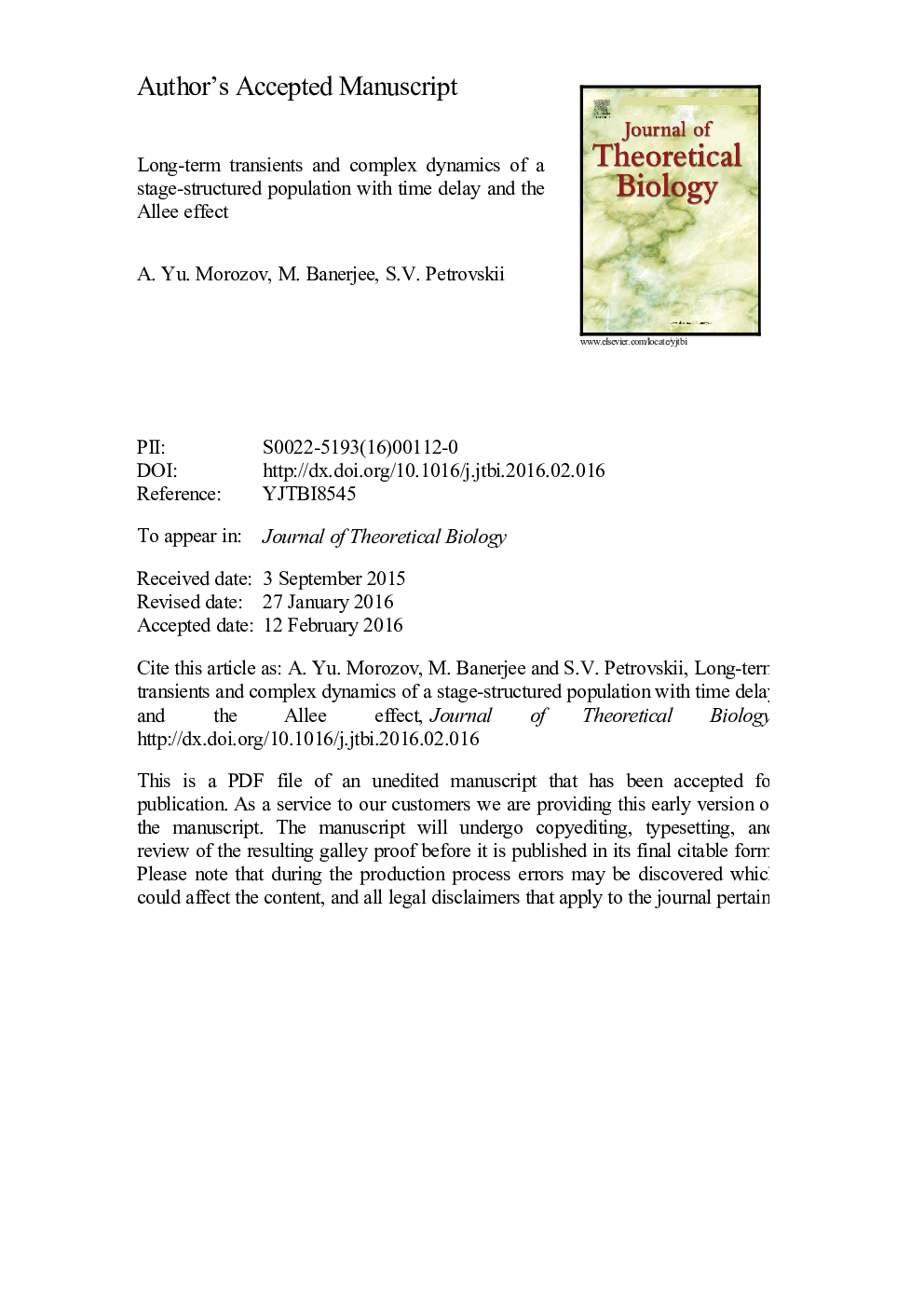| Article ID | Journal | Published Year | Pages | File Type |
|---|---|---|---|---|
| 6369299 | Journal of Theoretical Biology | 2016 | 27 Pages |
Abstract
Traditionally, mathematical modeling in population ecology is mainly focused on asymptotic behavior of the model, i.e. as given by the system attractors. Recently, however, transient regimes and especially long-term transients have been recognized as playing a crucial role in the dynamics of ecosystems. In particular, long-term transients are a potential explanation of ecological regime shifts, when an apparently healthy population suddenly collapses and goes extinct. In this paper, we show that the interplay between delay in maturation and a strong Allee effect can result in long-term transients in a single species system. We first derive a simple 'conceptual' model of the population dynamics that incorporates both a strong Allee effect and maturation delay. Unlike much of the previous work, our approach is not empirical since our model is derived from basic principles. We show that the model exhibits a high complexity in its asymptotic dynamics including multi-periodic and chaotic attractors. We then show the existence of long-term transient dynamics in the system, when the population size oscillates for a long time between locally stable stationary states before it eventually settles either at the persistence equilibrium or goes extinct. The parametric space of the model is found to have a complex structure with the basins of attraction corresponding to the persistence and extinction states being of a complicated shape. This impedes the prediction of the eventual fate of the population, as a small variation in the maturation delay or the initial population size can either bring the population to extinction or ensure its persistence.
Related Topics
Life Sciences
Agricultural and Biological Sciences
Agricultural and Biological Sciences (General)
Authors
A. Yu. Morozov, M. Banerjee, S.V. Petrovskii,
